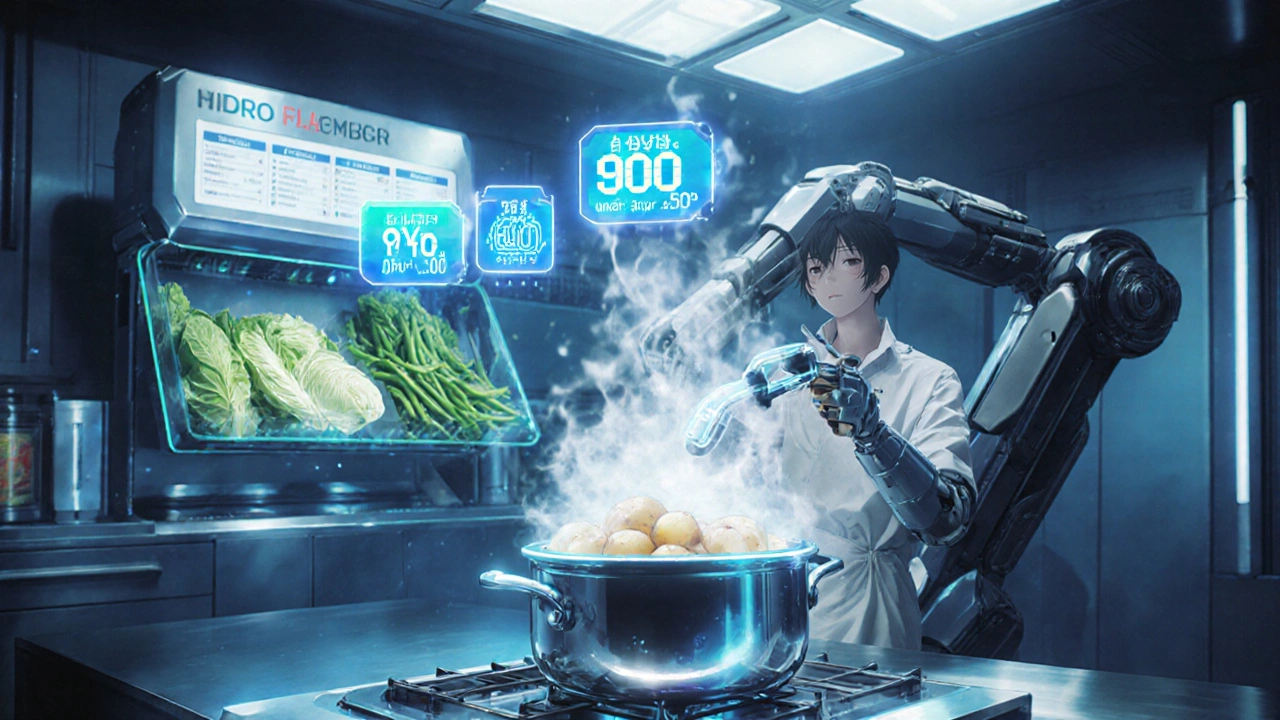When your kidneys aren't working well, even simple foods can become dangerous. For people with chronic kidney disease (CKD), high potassium levels-called hyperkalemia-can strike without warning, leading to heart rhythm problems, muscle weakness, or even cardiac arrest. This isn’t rare. In advanced CKD, nearly half of patients experience dangerous potassium spikes. The good news? We now have better tools than ever to manage it-without giving up life-saving medications.
Why Potassium Becomes a Problem in CKD
Your kidneys normally filter out extra potassium from your blood. When kidney function drops below 30% (eGFR <30 mL/min/1.73m²), that filter starts to fail. Potassium builds up. Levels above 5.0 mmol/L are considered high. Above 5.5 mmol/L, it’s dangerous. Above 6.0 mmol/L, it’s an emergency.This isn’t just about diet. Many CKD patients take medications like ACE inhibitors, ARBs, or MRAs to protect their heart and kidneys. These drugs-called RAAS inhibitors-are essential. But they also reduce potassium excretion. So you’re stuck: take the meds and risk high potassium, or stop them and risk heart failure or faster kidney decline.
Studies show that when doctors lower or stop RAAS inhibitors because of high potassium, patients face a 28% higher chance of heart problems and a 34% higher risk of kidney disease getting worse. That’s why managing potassium isn’t about avoiding meds-it’s about finding a way to keep them working safely.
Dietary Limits: What You Can and Can’t Eat
Diet plays a big role, but it’s not one-size-fits-all. If you’re in early CKD (stages 1-3a), you don’t need to cut potassium drastically. Focus on balance: avoid excessive amounts of high-potassium foods, but don’t eliminate them entirely.Once you reach stage 3b or higher-not yet on dialysis-you need stricter limits: 2,000 to 3,000 mg per day. That’s about half what a healthy person eats. Here’s what that looks like:
- Bananas: 422 mg per 100g → one small banana = nearly your daily limit
- Oranges: 181 mg per 100g → two oranges = 360 mg
- Potatoes: 421 mg per 100g → one medium baked potato = 900+ mg
- Spinach, tomatoes, avocados, dried fruit, nuts, and salt substitutes are also high
But here’s the trick: you can reduce potassium in some foods. Boiling potatoes, carrots, or beets for at least 10 minutes, then discarding the water, cuts potassium by 50% or more. Same with leafy greens-blanch them before cooking. Don’t drink the broth from soups or stews-potassium leaches into the liquid.
Many patients struggle with this. One clinic audit found only 37% of CKD patients consistently stick to low-potassium diets. Social isolation is real-missing family meals, avoiding restaurants, or feeling restricted can take a toll. That’s why dietitians now work with patients using apps that scan food barcodes and give instant potassium counts. Pilot programs show a 32% improvement in adherence with these tools.

Emergency Treatment: What Happens When Potassium Spikes
If your potassium hits 5.5 mmol/L or higher and you have symptoms-palpitations, muscle cramps, fatigue-or ECG changes like peaked T-waves, you need immediate action. At 6.0 mmol/L or above, it’s life-threatening.Emergency care follows a clear sequence:
- Calcium gluconate (10 mL of 10% solution IV) - Given over 2-5 minutes. It doesn’t lower potassium, but it stabilizes your heart muscle. Think of it like putting a shield around your heart so it doesn’t misfire. Onset: 1-3 minutes. Lasts 30-60 minutes.
- Insulin and glucose (10 units insulin + 50 mL of 50% dextrose) - Shifts potassium from blood into cells. Works in 15-30 minutes. Lowers levels by 0.5-1.5 mmol/L. But watch out: 10-15% of patients get low blood sugar. Blood glucose must be checked every 30 minutes for 2 hours after.
- Sodium bicarbonate (50-100 mmol IV) - Only if you’re also acidotic (bicarbonate <22 mmol/L). Works in 5-10 minutes. Helps move potassium into cells, but it’s not a first-line fix unless acidosis is present.
These steps buy time. But they don’t remove potassium from your body. That’s where binders come in.
Chronic Management: The New Generation of Potassium Binders
For long-term control, older treatments like sodium polystyrene sulfonate (SPS)-a powder you take orally-are fading out. Why? They’re slow, messy, and risky. SPS can cause colonic necrosis (tissue death in the colon) in up to 1% of users. It also adds a lot of sodium-11 mmol per gram-which worsens swelling and high blood pressure.Today, two newer binders dominate:
- Sodium zirconium cyclosilicate (SZC, brand name Lokelma) - Works fast. Starts lowering potassium within 1 hour. Reduces levels by 1.0-1.4 mmol/L in that time. Great for acute spikes. But it adds sodium-about 1.2 grams per day. That’s a problem for people with heart failure or fluid retention. About 12.3% of heart failure patients on SZC develop worsening edema.
- Patiromer (brand name Veltassa) - Slower. Takes 4-8 hours to work. Reduces potassium by 0.6-0.8 mmol/L at 4 hours. But it’s sodium-free. Better for long-term use. Side effects? Constipation (14.2%) and low magnesium (18.7%). It’s chalky and hard to swallow-22% of patients quit because of taste and texture.
Which one do you pick? If you’re having a sudden spike and need fast results, SZC is preferred. If you’re managing it daily, especially with heart failure or fluid issues, patiromer is often better. Many patients use both-SZC for emergencies, patiromer for daily control.
And here’s the big win: these drugs let you stay on your RAAS inhibitors. In one trial, 78% of patients on patiromer stayed on their full dose of ACE inhibitors. Without it, only 38% could. With SZC, 83% kept their heart meds going. That’s huge.

Monitoring and Coordination: The Hidden Key to Success
You can’t manage hyperkalemia with pills and diet alone. You need a system.After starting or increasing a RAAS inhibitor, your potassium should be checked within 1-2 weeks. Then every 3-6 months if stable. If you feel weak or your heart races, test right away.
Successful clinics use electronic alerts. When your potassium hits 5.0 mmol/L, the system automatically flags your chart and sends a referral to a renal dietitian and pharmacist-all within 72 hours. That’s how you catch problems before they become emergencies.
And you need a team:
- Nephrologist - Decides when to adjust meds
- Renal dietitian - Teaches you what to eat, how to prep food, and tracks your intake
- Clinical pharmacist - Checks for drug interactions (patiromer can cut thyroid medicine absorption by 23% if taken too close together)
Most CKD patients take an average of 7.2 medications. Timing matters. Take patiromer at least 3 hours before or after other pills. Take SZC with food, twice daily. Miss a dose? You’ll see your potassium creep up fast.
The Future: Smarter, Personalized Management
The next wave of hyperkalemia care is personalization. Researchers are testing urine potassium tests to tailor diet limits-some people naturally excrete more potassium than others. If your kidneys still have some function, you might tolerate more potassium than your neighbor with the same eGFR.New drugs are coming too. Tenapanor, approved for phosphate control, is showing promise in lowering potassium with minimal side effects. Encapsulated binding polymers in early trials are reducing potassium by 1.2 mmol/L in just 24 hours.
By 2027, experts predict 75% of CKD patients on RAAS inhibitors will also be on a potassium binder. It’s becoming standard care-not optional.
Cost remains a barrier. In the U.S., patiromer costs about $635 a month. SPS is $47. In the UK, newer binders cost 6 times more. But the math is clear: one hospital visit for hyperkalemia averages $12,450. The binder pays for itself in under two years.
It’s not about perfection. It’s about progress. You don’t have to eat bland food forever. You don’t have to stop your heart meds. With the right tools and support, you can live well-while keeping your potassium safe.
What is a normal potassium level for someone with CKD?
For people with chronic kidney disease, the optimal range is 4.0-4.5 mmol/L. Levels above 5.0 mmol/L are considered high, and above 5.5 mmol/L require urgent treatment. Keeping potassium in this narrow range helps protect the heart and kidneys without forcing you to stop essential medications.
Can I still eat fruits and vegetables with CKD and high potassium?
Yes-but you need to choose wisely and prepare them correctly. Avoid bananas, oranges, potatoes, tomatoes, and avocados in large amounts. Boil high-potassium veggies like potatoes or carrots for 10+ minutes and discard the water to reduce potassium by half. Stick to low-potassium options like apples, cabbage, cauliflower, and green beans. Portion control matters more than elimination.
Why can’t I just stop my blood pressure meds if my potassium is high?
Stopping RAAS inhibitors like ACE inhibitors or ARBs might lower potassium, but it increases your risk of heart failure, stroke, and faster kidney decline by 28-34%. These drugs are lifesaving for CKD patients. The goal isn’t to stop them-it’s to manage potassium so you can keep taking them safely, using diet and binders.
How do potassium binders like Lokelma and Veltassa work?
They work in your gut. Instead of letting potassium get absorbed into your bloodstream, these binders trap it in your intestines and carry it out in your stool. Lokelma (SZC) works fast-within an hour-making it good for emergencies. Veltassa (patiromer) works slower but is better for daily use because it doesn’t add sodium. Neither is absorbed into your body.
What are the side effects of potassium binders?
Lokelma (SZC) can cause fluid retention and swelling because it adds sodium-about 1.2 grams per day. This can worsen heart failure. Veltassa (patiromer) often causes constipation (14%) and low magnesium (19%). Both can interfere with other medications if taken too close together. Always take binders at least 3 hours apart from other pills.
How often should I get my potassium checked?
Check within 1-2 weeks after starting or increasing a RAAS inhibitor. Once stable, check every 3-6 months. If you feel weak, have palpitations, or notice irregular heartbeats, test immediately. Don’t wait. High potassium can cause sudden heart rhythm problems.
Managing hyperkalemia in CKD isn’t about fear. It’s about control. With the right diet, the right meds, and the right team, you can live fully-without risking your heart or your kidneys.
